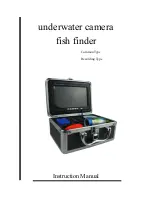
18
Shoot-Thru-Hull Preparation
Hulls With Flotation Materials
The transducer installation inside a fiberglass hull must be in an area
that does not have air bubbles in the resin or separated fiberglass lay-
ers. The sonar signal must pass through solid fiberglass. A successful
transducer installation can be made on hulls with flotation materials
(such as plywood, balsa wood or foam) between layers of fiberglass if
the material is removed from the chosen area. See the figure below.
WARNING:
Do not remove any material from your inner hull unless
you know the hull's composition. Careless grinding or
cutting on your hull can result in damage that could
sink your boat. Contact your boat dealer or manufac-
turer to confirm your hull specifications.
Epoxy the transducer to a solid portion of the hull.
Some (but not all) manufacturers use a layer of fiberglass, then a core
of balsa wood, finishing with an outer layer of fiberglass. Removing the
inner layer of fiberglass and the balsa wood core exposes the outer
layer of fiberglass. The transducer can then be epoxied directly to the
outer layer of fiberglass. After the epoxy cures, the hull is watertight
and structurally sound. Remember, the sonar signal must pass through
solid fiberglass. Any air bubbles in the fiberglass or the epoxy will re-
duce or eliminate the sonar signals.
Fill with resin
Inner hull
Epoxy to hull first
Outer hull
Flotation material
Fill with
Содержание FishEasy 250 DS
Страница 10: ...6 Notes ...
Страница 62: ...58 Notes ...
Страница 67: ...63 Notes ...
Страница 68: ...64 Notes ...



































